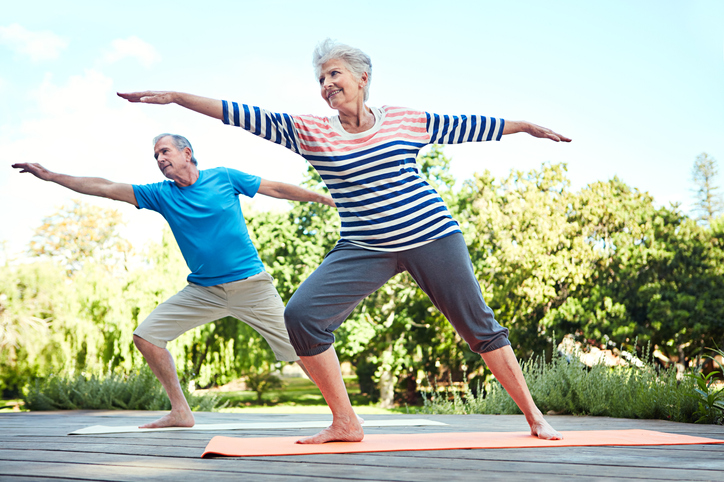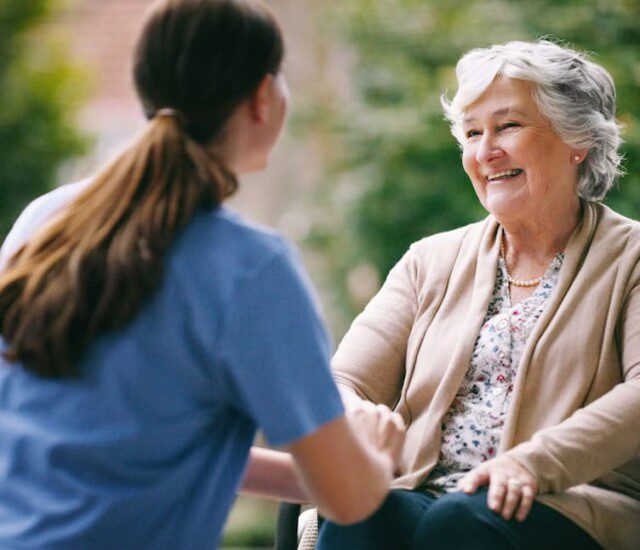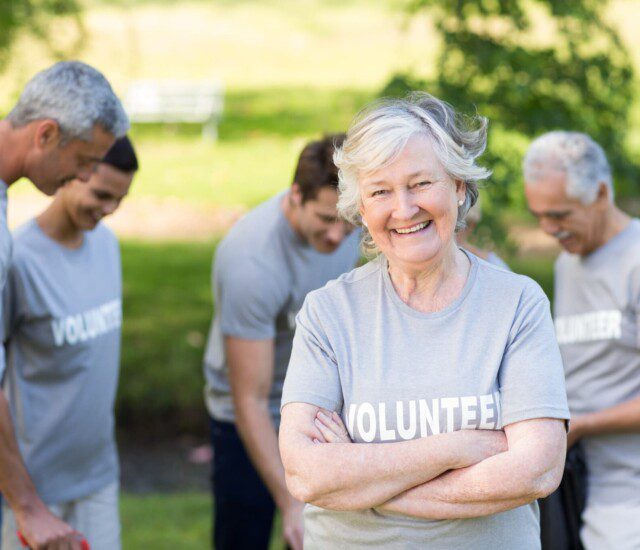One of the best things you can do for your health at any age is to maintain your strength, balance, and flexibility. Reflexes and coordination can slow over time, leading to more frequent trips and falls that may result in serious injury. Older adults are especially at risk, as the natural aging process can result in a reduction in bone and muscle mass. A stumble that one could shrug off earlier in life could turn into an emergency event.
Luckily, there are ways to mitigate your risks. Read on to learn why balance is so important for seniors and discover simple ways to improve your balance overall.
Why is Balance Important for Older Adults?
When you think about exercise and activity, things like walking, lifting weights, or stretching might come to mind. Balance is an essential component for being able to perform these activities successfully, serving as a critical foundation for many activities of daily living for seniors.
As we age, our balance may change due to a number of factors. This includes natural shifts in our depth perception, reductions in bone and muscle mass, and slowed reflexes. According to the Centers for Disease Control and Prevention, approximately 14 million falls are reported among older adults each year, or about one in four seniors over 65.
This is why it’s so important to add balance-specific exercises to your regular routine. Not only can you reduce your risk of falling, but if you do fall, being physically stronger can help you mitigate injury.
3 Benefits of Improving Balance
Preventing injury isn’t the only reason to incorporate senior balance exercises into your overall fitness routine. Here are three other benefits that you can achieve by becoming more balanced.
Increased Strength
By working to strengthen the muscles in your legs to improve your balance, you’ll likely see many other benefits. In addition to having more energy or being able to go greater distances, increased strength has been shown to preserve bone density and reduce the risk of osteoporosis, heart disease, and type 2 diabetes.
Build Confidence
When you know you have your feet firmly underneath you, it’s a huge confidence boost. Improved balance also leads to increased coordination and reaction times, providing a greater ability to correct yourself if you slip or encounter difficult terrain. With a reduced fear of falling, you may feel more comfortable visiting locations or participating in activities you might have previously avoided.
Remain Independent
Improved balance helps you stay independent in several different ways. For one, you can more easily navigate living independently. This may mean going up and down stairs without concern or completing simple chores and errands without assistance. Maintaining your balance longer may also contribute to your ability to participate fully in active senior living—allowing you to dive into your passions and hobbies more easily.
Assess Your Fall Risk Factors
As you create your balance exercise strategy, it can be helpful to understand your current abilities. This can identify areas where you can improve. At Harbour’s Edge, we offer residents access to VSTBalance and VirtuSense, an automated fall-risk assessment tool that utilizes artificial intelligence with machine vision to objectively identify fall-risk indicators.
The evaluation only takes a few minutes. It then creates a report that assists residents in identifying early deficits in balance, gait, and function that can be addressed by skilled treatment. Treatment plans are then created using engaging biofeedback activities that assist in reducing falls while improving mobility.
This type of risk assessment and the application of more personalized plans has been shown to:
- Reduce post-acute care falls by 73%
- Improved mobility for residents by 85%
Those without access to tools like these can speak to a healthcare professional about possible alternatives for identifying their risk factors.
Simple Ways to Improve Balance
Improving your balance is likely easier than you think. There are many proactive measures you can take that pay dividends in confidence and comfort. Here are a few of them.
Physical Exercise
Living an active senior lifestyle and incorporating regular exercise into your daily routine will do wonders for your balance. It doesn’t have to be elaborate, either. Simple activities like walking each morning or joining a group yoga class will pay off with persistence. The facts back it up, with studies showing regular exercise may reduce the rate of falls by 23%. However, be sure to speak to your doctor before starting any new exercise routine.
Mental Exercise
Keeping yourself mentally sharp is a critical factor in balance that can’t be overlooked. Improved cognition helps you better understand your environment, stay focused, and assess risks that could lead to falls. Activities such as yoga, tai chi, and dance are all fun and effective ways for older adults to improve their mind-body connection and increase balance.
Get the Right Equipment
If you’re running a marathon, you’re not going to do it in flip-flops. The same principle applies to everyday life: Having the right equipment helps you maximize your performance. Make sure you have comfortable shoes with good traction that feel balanced and sturdy. If you have mobility issues or are trying to navigate difficult terrain, or even stairs, you may want to use an assistive device like a cane or walker for extra support.
Regular Checkups
Sometimes, the causes of balance issues are beyond your control. Underlying conditions with your vision, hearing, or medication side effects can impair your coordination. It’s important to regularly consult with your doctor and wear prescribed glasses or hearing aids that can assist in improving your balance.
Stay Agile With Age at Harbour’s Edge
At Harbour’s Edge, the health and wellness of our residents is paramount. We work with every individual to craft a custom wellness plan that incorporates intellectual, physical, social, and spiritual well-being to help them accomplish their goals and get the most out of each day. Additionally, our Delray Beach community offers a range of health services, such as skilled nursing and rehabilitation, that provide residents with the extra care and support they need. Residents also get access onsite to VirtuSense and VSTBalance, a rehabilitative technology that reduces falling risks by improving balance and increasing mobility through biofeedback activities.
If you’d like to learn more about Harbour’s Edge for yourself or a loved one, please contact us today and get the conversation started.


